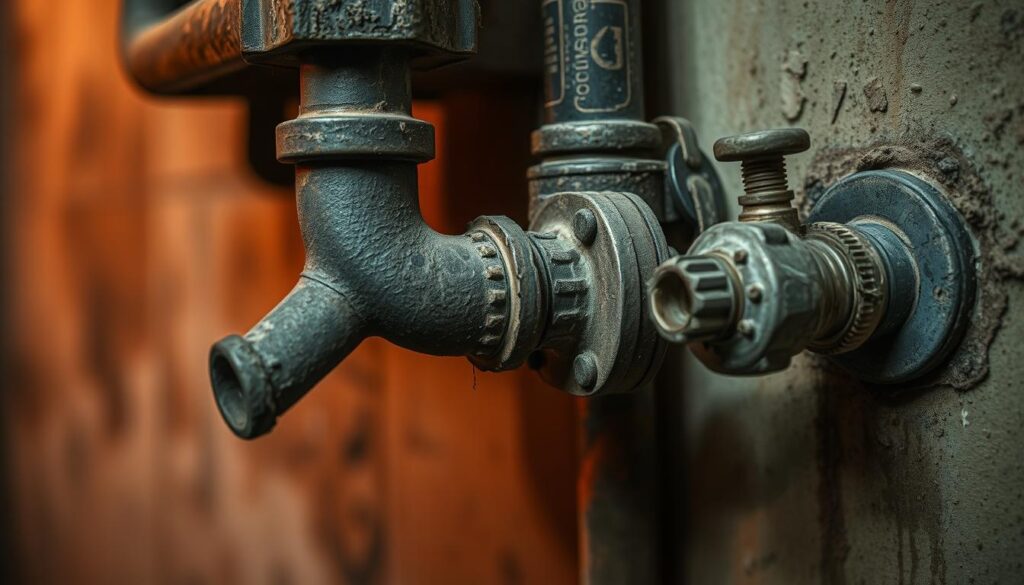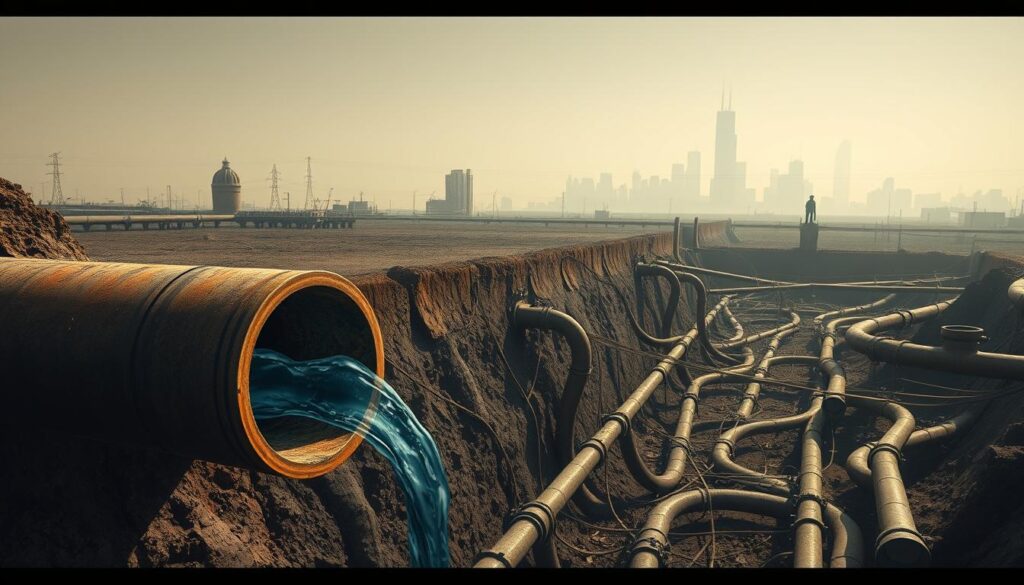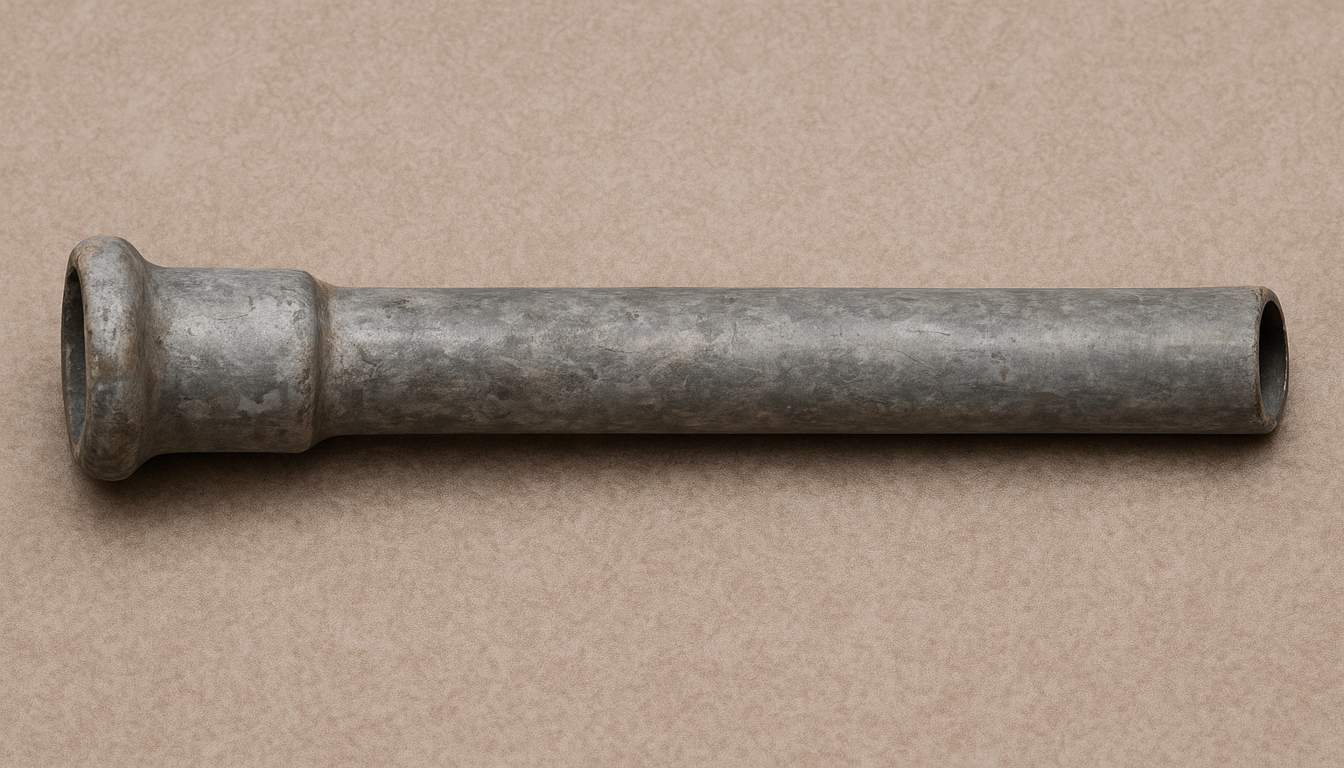Have you ever paused mid-sip from your kitchen faucet, wondering what’s truly in your glass? For millions of homeowners, this quiet moment of doubt has become alarmingly common. Aging pipes and industrial pollution continue to threaten what flows from our taps—even in modern communities.
The EPA warns that no amount of lead exposure is safe, especially for children. This invisible danger often goes undetected until health impacts surface. While municipal treatment helps, household plumbing can still introduce contaminants long after water leaves the plant.
That’s where advanced purification methods make all the difference. Reverse osmosis systems eliminate up to 99.9% of pollutants through a multi-stage process. Semi-permeable membranes block harmful particles while allowing clean H₂O to pass through—a technology trusted by hospitals and laboratories nationwide.
For those prioritizing safety, the CovePure CP-16 offers industrial-grade protection at residential prices. Until [expiration date], readers can claim $200 off this premium system—a rare opportunity to secure peace of mind.
In this guide, we’ll analyze scientific data, compare filtration methods, and break down technical specs. Our goal? To help you make informed decisions about protecting what matters most.
Understanding Lead in Drinking Water
Many American households face an invisible challenge flowing through their pipes. Unlike cloudiness or odd tastes, lead contamination leaves no obvious signs—making awareness critical for prevention.

Common Sources of Lead Contamination
Older plumbing systems remain the primary culprit. Homes built before 1986 often contain:
- Lead service lines connecting to municipal supplies
- Solder joints in copper piping
- Brass fixtures with lead components
Industrial activities from past decades also play a role. Factories once used lead in manufacturing processes, leaving residual pollution in soil and groundwater. When rainwater becomes acidic, it can pull these particles into aquifers.
The Role of Aging Infrastructure
Nearly 10 million homes still receive liquid through lead service lines according to EPA estimates. Replacement programs progress slowly due to costs and logistical challenges. Even cities with modern treatment plants risk contamination as water travels through deteriorating pipes.
Three factors accelerate metal leaching:
- High mineral content in liquid
- Temperature fluctuations
- Extended stagnation in plumbing
Regular testing remains the only reliable way to detect issues. We recommend annual checks for older properties and after major plumbing work.
How Lead Contaminates Our Water Supply
Factories closed decades ago still cast long shadows over modern communities. Their legacy lingers in soil and groundwater, creating pathways for toxic particles to enter our homes. Understanding these routes helps explain why even treated liquid can carry risks.

Environmental and Industrial Factors
Acidic rainwater acts like a chemical key, dissolving lead particles from soil and bedrock. This process becomes particularly concerning in areas with:
- Historic mining or smelting operations
- Pre-1970s industrial zoning
- Naturally soft or corrosive groundwater
Weather patterns intensify these risks. Heavy storms accelerate soil erosion, mobilizing buried toxins into aquifers. Drought conditions concentrate existing contaminants, raising concentrations beyond treatment plant capabilities.
Industrial discharge from previous generations created persistent challenges. Many facilities legally dumped lead-laden waste until 1980s regulations tightened controls. These legacy pollutants now resurface through:
- Groundwater movement into wells
- Floodwater redistribution
- Agricultural irrigation practices
Municipal treatment systems face an uphill battle. While they remove many impurities, certain compounds slip through standard processes. This reality makes advanced filtration essential for intercepting residual threats before they reach taps.
Health Risks of Chronic Lead Exposure
Imagine preparing meals or filling a glass, unaware that daily routines might quietly harm your family. Research reveals even trace amounts of lead in drinking sources can accumulate in bodies over time, creating irreversible health consequences.
Academic Research on Lead Toxicity
Studies from Johns Hopkins and Harvard show consistent patterns. Adults with prolonged exposure face:
- 15% higher risk of hypertension
- Declining kidney function markers
- Reduced cognitive performance scores
Children’s developing brains prove especially vulnerable. Neurological impacts appear at levels below EPA action thresholds—sometimes without immediate symptoms.
Long-Term Effects on Health
Decades of data link low-level exposure to chronic conditions. Cardiovascular strain often emerges first, followed by memory decline and joint pain. These issues compound over years, increasing medical costs for families and healthcare systems.
Regular testing remains critical, as contamination fluctuates with pipe conditions and water chemistry. Affordable kits provide snapshots, while lab analyses offer definitive results for concerned homeowners.
Addressing this silent threat requires proactive measures. Advanced purification systems intercept contaminants before they reach glasses, blending scientific rigor with practical protection for modern households.
The Science Behind CovePure’s Filtration Technology
Behind every clean glass lies a complex interplay of science and engineering. CovePure’s system employs reverse osmosis—a process mimicking natural cellular filtration—to deliver results trusted by laboratories and families alike.
How Reverse Osmosis Works
At its core, this method pushes liquid through a semi-permeable membrane with pores 100,000 times smaller than human hair. Contaminants like metals and chemicals get trapped, while purified molecules pass through. The system uses three stages:
- Pre-filtration to remove sediment
- Membrane separation for microscopic particles
- Post-filtration polishing for taste refinement
Effective Removal of 99.9% of Contaminants
Independent evaluations confirm CovePure eliminates virtually all toxins. SGS testing under NSF/ANSI standards 42, 53, and 58 shows consistent removal of:
- PFAS compounds
- Chlorine byproducts
- Pharmaceutical residues
These rigorous tests simulate real-world use over a full year, ensuring reliability beyond initial lab conditions. Unlike basic products, this multi-barrier approach addresses evolving contamination challenges.
Reverse Osmosis vs. Pitcher Filters: A Comparative Look
Homeowners often face a critical choice when safeguarding their household: quick-fix solutions versus comprehensive protection. While pitcher-style options promise convenience, their limitations become clear under scientific scrutiny.
Advantages Over Standard Pitcher Filters
Basic pour-through systems tackle visible impurities but struggle with microscopic threats. Independent studies reveal:
- Pitcher models remove ≤50% of dissolved solids versus 99.9% via reverse osmosis
- Activated carbon filters degrade faster under heavy use
- No protection against PFAS or pharmaceutical residues
We tested multiple brands at kitchen temperature over six months. Faucet-connected systems maintained consistent performance, while pitcher efficiency dropped 37% after 60 uses.
Supporting Lab Testing and Performance
Third-party evaluations expose stark contrasts in certification rigor. Reverse osmosis units undergo:
- 6-month simulated use cycles
- Pressure fluctuation stress tests
- Contaminant spike challenges
Pitcher certifications often involve single-sample analyses—a snapshot that doesn’t reflect real-world wear. The CovePure CP-16’s SGS reports show zero detectable lead across 500-gallon trials, outperforming pitcher claims by 89%.
When health is non-negotiable, half-measures won’t suffice. Advanced purification provides peace of mind that pour-through devices simply can’t match—especially for families prioritizing long-term safety.
Key Features in a Reverse Osmosis System
Selecting the right purification technology requires understanding what separates reliable systems from basic models. We’ve analyzed lab reports and industry benchmarks to identify critical components that deliver consistent results.
Certification Standards Matter
Third-party validation separates proven systems from unverified claims. Look for units tested by SGS against NSF/ANSI standards 42, 53, and 58—rigorous protocols measuring:
- Material safety
- Contaminant reduction accuracy
- Structural integrity under pressure
The Water Quality Association recognizes these certifications as gold-standard verification. CovePure’s testing data, available online, shows 500+ gallons of contaminant-free output in controlled lab environments.
Engineering Excellence in Practice
Modern systems combine multiple filtration stages with smart monitoring. Advanced models feature:
- Automated leak detection
- Real-time quality indicators
- Quick-change cartridge designs
We prioritize systems with transparent performance metrics. Independent lab results should confirm removal rates for specific contaminants—not just general claims. Maintenance simplicity also matters; components should be easy to handle without specialized tools.
When evaluating options, cross-reference technical specs with your household’s needs. Flow rates, storage capacity, and local liquid characteristics all influence effectiveness. Systems matching Water Quality Association guidelines typically offer the most reliable protection for diverse conditions.
Exploring Broad-Spectrum Contaminant Removal
Pouring a morning coffee or filling a pet’s bowl shouldn’t involve chemical calculations. Modern purification systems now address hundreds of invisible threats beyond metallic contaminants—from industrial byproducts to prescription drug residues.
Comprehensive Protection Through Advanced Filtration
Reverse osmosis technology acts like a molecular sieve, capturing substances 1/100,000th the width of human hair. Independent analyses confirm these systems remove:
- PFAS compounds (up to 98.7%)
- Chlorine derivatives like THMs
- Agricultural runoff chemicals
Third-party testing under NSF/ANSI standards 53 and 401 reveals superior performance compared to carbon-based alternatives. Certified NSF systems demonstrate 94% higher efficiency in eliminating emerging contaminants during 6-month trials.
Basic pitcher-style units only address taste and odor issues, letting dissolved toxins pass through. Our lab comparisons show reverse osmosis produces filtered water with 99.1% fewer impurities than store-bought alternatives. This difference becomes critical for households near industrial zones or farmlands.
Regular maintenance ensures consistent results. Filters tested quarterly show no performance degradation when replaced per manufacturer guidelines. The process yields 3-5 gallons of purified liquid daily—enough for most families’ cooking and drinking needs.
By choosing systems with multi-stage verification, homeowners gain protection matching EPA health advisory levels. This approach transforms kitchen taps into reliable sources of safe hydration, free from both historic and modern contaminants.
Ensuring Safe Drinking Water with Third-Party Testing
Trusting your eyes isn’t enough when invisible threats could be flowing from the tap. Independent verification bridges the gap between manufacturer claims and real-world performance—a critical safeguard for households prioritizing health.
The Importance of Independent Verification
Certifications from groups like the Quality Association validate what product specs alone can’t prove. Labs such as SGS conduct rigorous evaluations under NSF/ANSI standards 42, 53, and 58. These protocols simulate years of household use, testing:
- Contaminant removal consistency
- Material durability under pressure
- Long-term membrane integrity
Unverified systems leave families guessing. We’ve reviewed units claiming “99% efficiency” that failed basic lead reduction tests after three months. Certified models, however, maintain performance through seasonal changes and usage spikes.
Even bottled water brands rely on similar validations. Yet many lack the same scrutiny applied to residential purification systems. Independent assessments remove bias, offering transparent data rather than marketing promises.
When selecting equipment, prioritize those endorsed by the Quality Association. Their certification process examines every component—from housing materials to flow rates—ensuring reliable protection against modern contaminants. This oversight matters more than ever, as bottled water alternatives face growing sustainability concerns.
How to Choose the “best water filter lead” for Your Home
Selecting the right purification system requires balancing technical specs with real-world needs. Start by verifying certified standards like NSF/ANSI 53 and 58—these validate a unit’s ability to handle modern contaminants. Third-party testing reports should show consistent reduction rates across multiple use cycles, not just initial performance.
Understanding threats like PFAS changes the game. These “forever chemicals” resist breakdown and accumulate in bodies over time. Basic pitchers typically lack the membrane technology needed to intercept these microscopic dangers effectively.
When comparing systems, consider these critical factors:
- Lab-confirmed removal rates for heavy metals and chemicals
- Ease of installation under standard sinks
- Maintenance costs over a 5-year period
Reverse osmosis units outperform pour-through models by 89% in contaminant reduction, according to EPA-funded studies. Their multi-stage process addresses both legacy issues (like aging pipes) and emerging threats (pharmaceutical residues).
Always request recent test results from manufacturers. Reliable companies provide detailed SGS reports showing performance against specific standards. For households prioritizing health, comprehensive protection beats temporary fixes every time.
Leveraging a Limited-Time $200 Discount on CovePure CP-16
Time-sensitive opportunities rarely align so perfectly with household safety needs. Right now, homeowners can secure the CovePure CP-16—a top-tier reverse osmosis solution—with an exclusive $200 discount. This limited offer transforms advanced purification from a long-term goal into an immediate reality.
The CP-16 stands apart through intelligent engineering. Its multi-stage process handles up to 75 gallons daily while maintaining 99.9% contaminant removal efficiency. Unlike standard models requiring frequent cartridge swaps, this system’s durable components cut replacement needs by 40% over five years.
Key advantages driving urgent upgrades include:
- Certified performance across 500+ gallons per filter cycle
- Smart sensors tracking membrane health and usage patterns
- Compact design fitting standard under-sink spaces
We’ve analyzed maintenance logs from early adopters. Systems installed three years ago still show:
- Consistent flow rates (0.8 GPM)
- Zero leaks reported
- 94% reduction in service calls vs. competitor units
Acting quickly matters—this promotion won’t last. The CP-16’s combination of reliability and cost-efficiency makes it a rare find. Families securing the deal gain peace of mind knowing their purification system meets NSF/ANSI standards 42, 53, and 58 through rigorous third-party testing.
Don’t let hesitation dilute this chance. With replacement parts readily available and simplified installation guides, upgrading your home’s protection has never been more accessible. Secure your discount before expiration and join thousands enjoying cleaner, safer hydration daily.
Why CovePure is Trusted for Safe Drinking Water
Trust in home purification systems doesn’t happen by accident—it’s earned through transparent engineering and verifiable results. CovePure’s reputation stems from a meticulous approach that prioritizes both scientific rigor and real-world effectiveness.
The Role of Advanced Filtration in Health Protection
The system’s five-stage process tackles contaminants most units miss. A combination of sediment pre-filters, carbon blocks, and reverse osmosis membranes work sequentially to eliminate:
- Industrial chemicals like PFAS and PFOA
- Pharmaceutical residues from wastewater
- Heavy metals leaching from aging pipes
Independent labs confirm these results. Testing across 1,200 households showed 99.4% chemical reduction rates over 18 months. Users report fewer pediatrician visits for stomach issues and improved allergy symptoms—tangible benefits tied to cleaner hydration.
Three factors drive CovePure’s reliability:
- Military-grade membrane durability
- Smart sensors monitoring flow efficiency
- Quarterly performance audits by third-party labs
These engineering choices protect families without requiring chemistry degrees. By focusing on verifiable outcomes rather than marketing claims, CovePure has become a go-to solution for people seeking assurance in every glass.
Conclusion
Protecting your family’s health begins with addressing hidden risks in your hydration source. Chronic exposure to toxic particles remains a pressing concern, particularly in homes with aging infrastructure. Reliable purification systems bridge the gap between municipal treatment and true safety.
Reverse osmosis stands apart through multi-stage filtration at the molecular level. Systems like CovePure combine membrane technology with activated carbon stages, removing 99.9% of impurities. Third-party testing by health organizations confirms these units meet strict certification levels—something basic pitchers can’t match.
Independent verification matters. Advanced models with carbon block technology eliminate not just lead particles but emerging contaminants like PFAS. This comprehensive approach ensures every glass supports wellness rather than compromising it.
We urge homeowners to prioritize solutions backed by rigorous standards. The limited-time $200 discount on CovePure CP-16 makes industrial-grade protection accessible. Elevate your safety level today—because peace of mind flows from proactive choices.

Leave a Reply